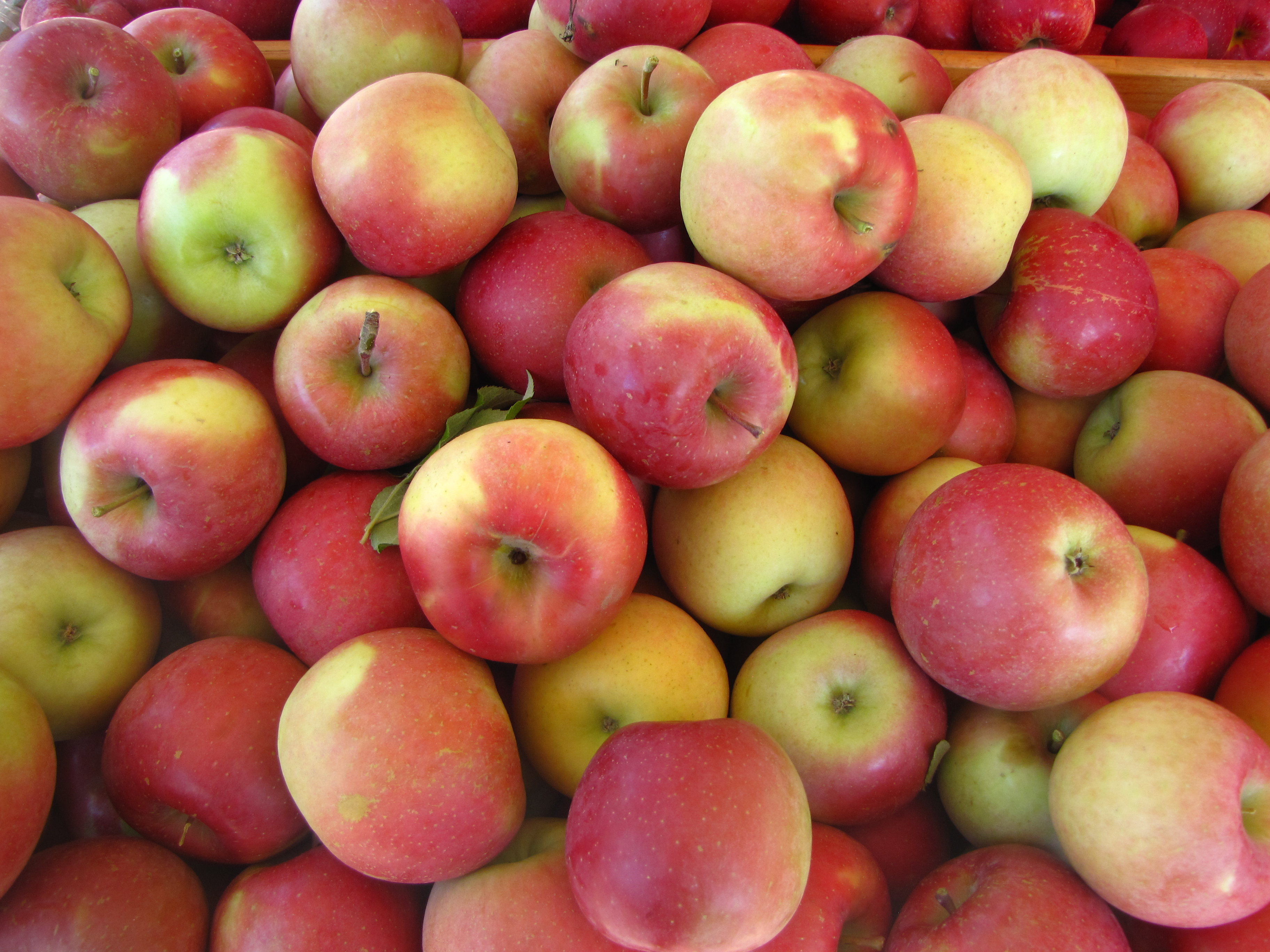
THE LIST of apples developed in Japan that have thrived in New England is short and sweet yet spans the growing season. The five apples profiled here are relatively new, none older than 1930.

Fuji has become one of the best-known apples in the world since its commercial release a half-century ago. It is a medium to large, yellow-green apple covered with a heavy pink blush. A late-season apple with dense, juicy white flesh, its sweet flavor owes primarily to its Red Delicious parent.
Fuji’s other parent, the Virginia heirloom Ralls Janet, is a good eating apple known for its late bloom, making Fuji less susceptible to frost damage than many varieties. Fuji stores exceptionally well, maintaining its quality for several weeks left in a fruit bowl or for up to one year refrigerated.
Fuji was developed in Japan in 1939, and was named in 1962, after Japan’s tallest and most sacred mountain.

Mutsu, or Crispin, is a large, slightly conical apple ranging in color from green to yellow, often with an orange blush. Its crisp, pale yellow flesh is aromatic, sweeter than tart, and juicy. It is more tart than either its Golden Delicious or Indo parents.
Mutsu is an all-purpose apple, especially good in salads as its flesh browns slowly. It is a good pie apple due to its flavor and size, and because it holds it shape when cooked. It stores extremely well.
Originally named for a province in Japan, Mutsu was discovered in 1930 and released in 1948. It was renamed Crispin in England in 1968, but more often is sold as Mutsu in New England.

Shizuka is a large, round or conical, green-yellow apple with a red-orange blush. A late-season apple, Shizuka has the same parentage as Mutsu: Golden Delicious crossed with Indo, a sweet Japanese apple from the 1930s. But Shizuka’s flavor and texture are very different. Shizuka has distinctive light crisp flesh similar to Honeycrisp and Jonagold, and it is sweeter than Mutsu.
It is excellent eaten fresh or in a salad, as it is slow to brown when cut. It stores well.
Shizuka was developed by Tsuneo Murakami in Aomori prefecture in 1969, and released commercially in 1986. Like Jonagold and Karmijn de Sonnaville, Shizuka’s popularity has lagged behind its virtues in the United States, in part, perhaps, as a result of its unremarkable name.

In contrast to these late-season apples are two early season varieties, Akane and Sansa.
Akane (ah ‘kah neh) is known as Tokyo Rose and Prime Red in its native Japan, and Primrouge in France for its striking red color. It has sweet-tart flavor with hints of strawberry, crisp white flesh, and lots of juice. One of the best early season apples, it is good for baking as well as for fresh eating, as it holds its shape well.
Akane is the result of a cross between the English heirloom Worcester Pearmain, known for its strawberry flavor, and Jonathan, an American heirloom with outstanding flavor and distinctive red color. Akane was discovered in 1937 and released in 1970.

Sansa is medium sized, round, and typically red in color (it can also appear with a deep pink blush on a yellow skin). It is sweet and juicy, with crisp, light-green flesh. Considered best for fresh eating, it is one of the better early season apples.
Sansa is the result of a collaboration between researchers in Japan and New Zealand. The apple’s parents are Japan’s Akane and New Zealand’s Gala, which gives Sansa its characteristic sweetness.
In 1969, Japanese apple breeder Dr. Yoshio Yoshida sent pollen harvested from Akane blossoms to Dr. Donald McKenzie in New Zealand, to cross-pollinate with Gala. Gala was not grown in Japan at the time, and Akane was not available in New Zealand.
McKenzie returned seeds from this cross to Yoshida, and the resulting trees were evaluated for nearly 20 years before the variety’s 1988 release. McKenzie did not live to see the result of their joint effort, though, as he was killed in a car accident that same year.
* * *
 RUSSELL STEVEN POWELL will discuss apples and read from his new book, Apples of New England (Countryman Press), at several sites during and after the Columbus Day Weekend.
RUSSELL STEVEN POWELL will discuss apples and read from his new book, Apples of New England (Countryman Press), at several sites during and after the Columbus Day Weekend.
Photographer Bar Lois Weeks will make a joint appearance with Powell at Boothby’s Orchard and Farm Monday, October 13:
Saturday, October 11, 2 p.m.
80 Old Main St., Deerfield, Massachusetts
*
Monday, October 13, 11 a.m.
366 Boothby Rd., Livermore, Maine
*
Tuesday, October 14, 7:30 p.m.
Williamsburg Historical Society
4 North Main St., Williamsburg, Massachusetts